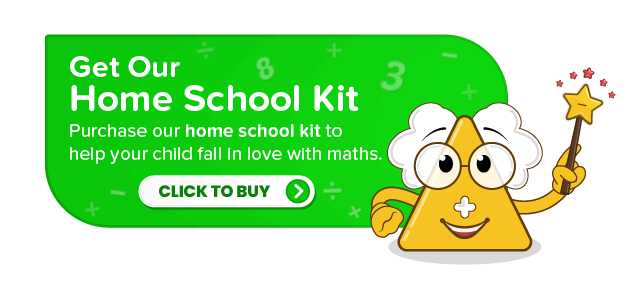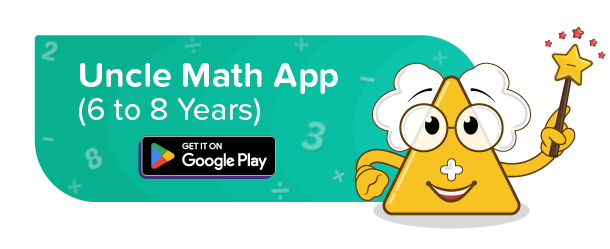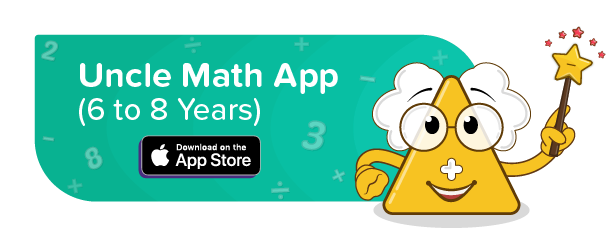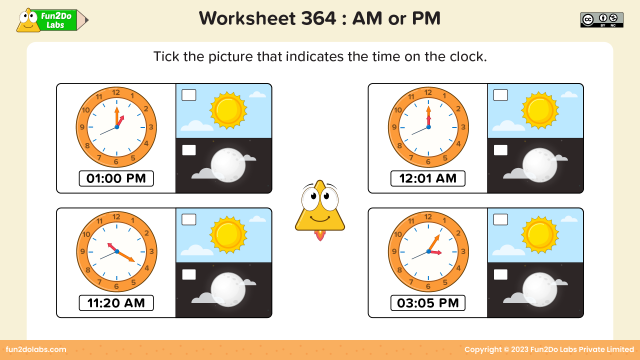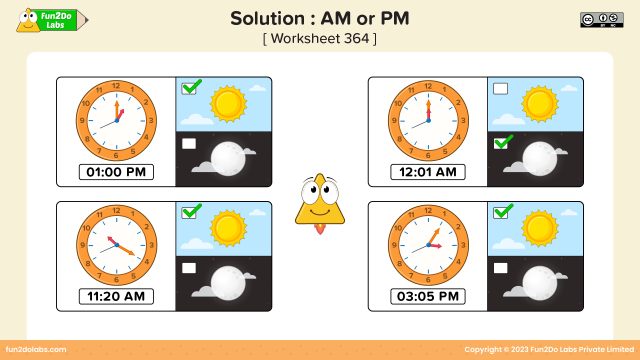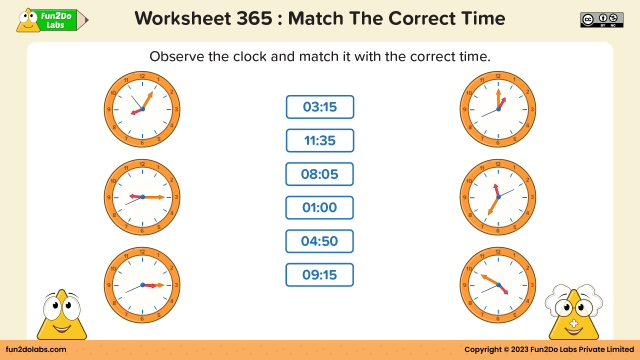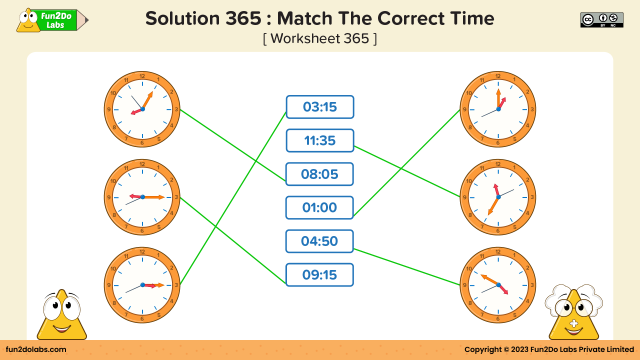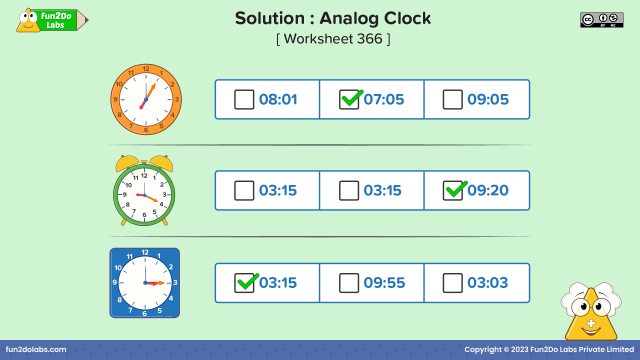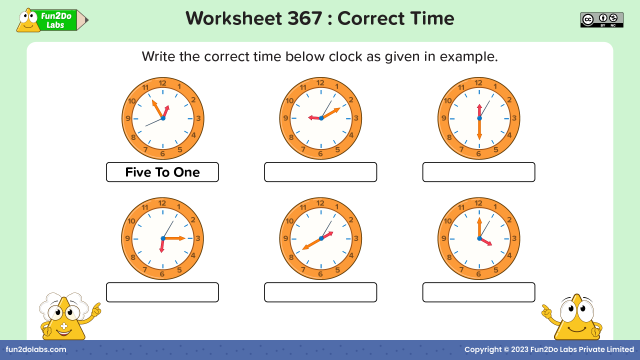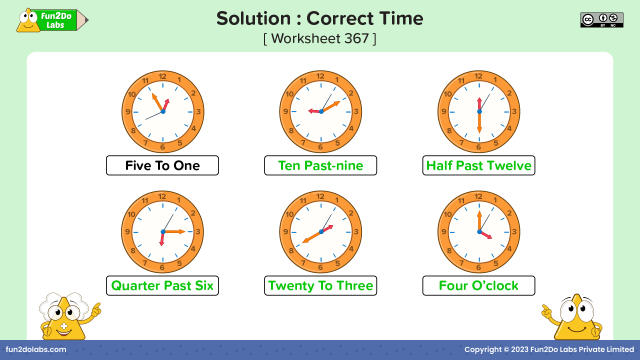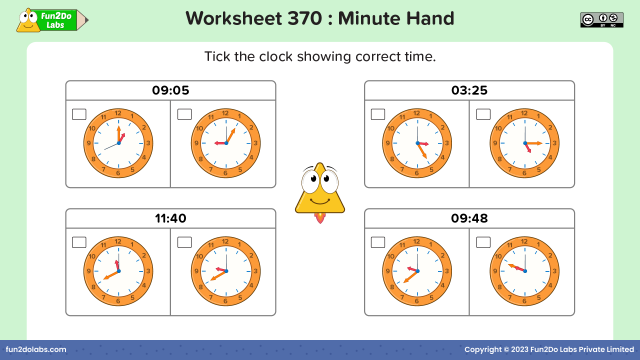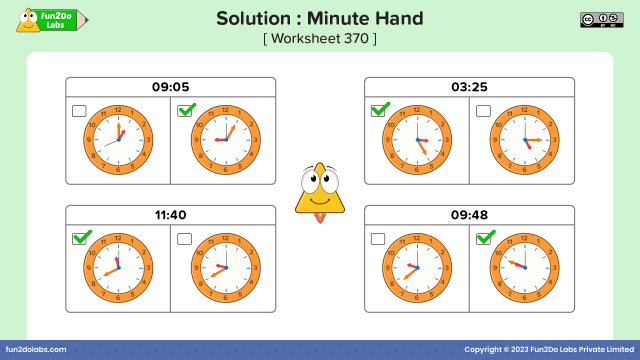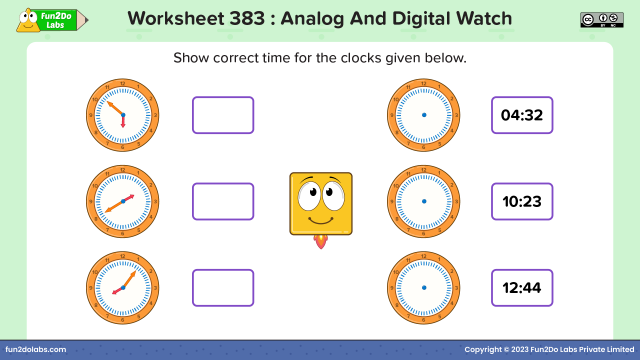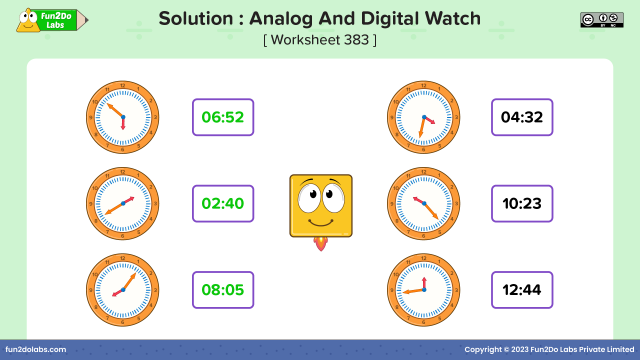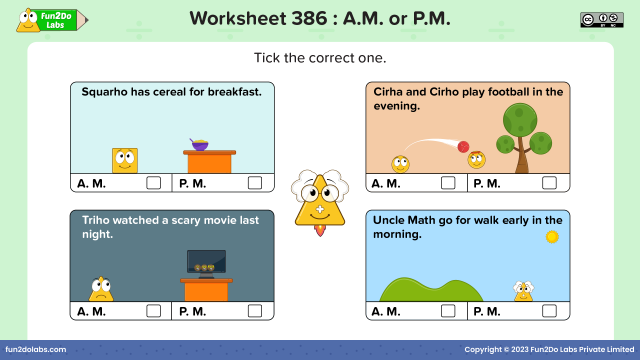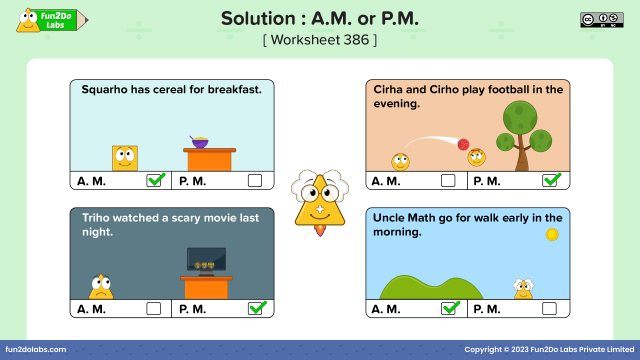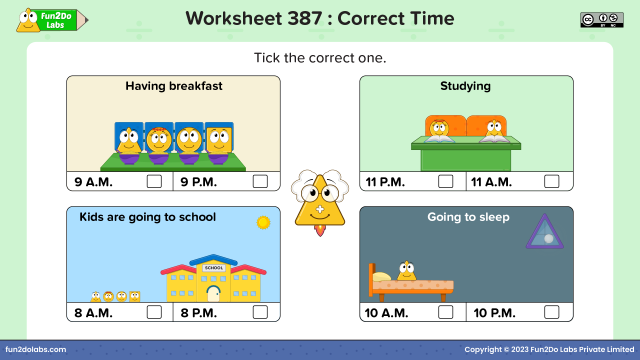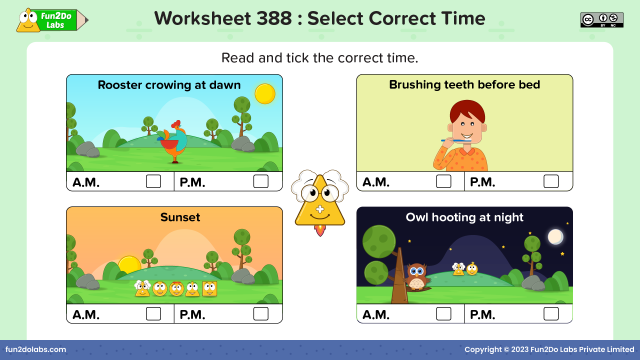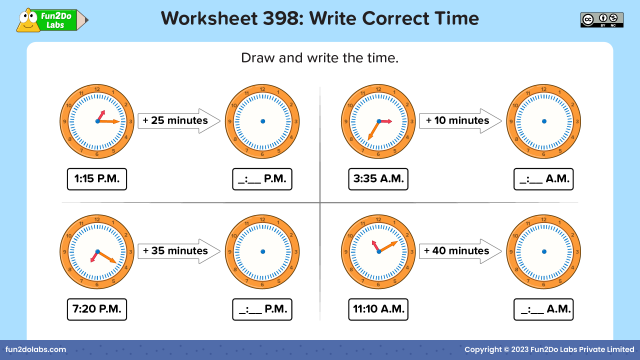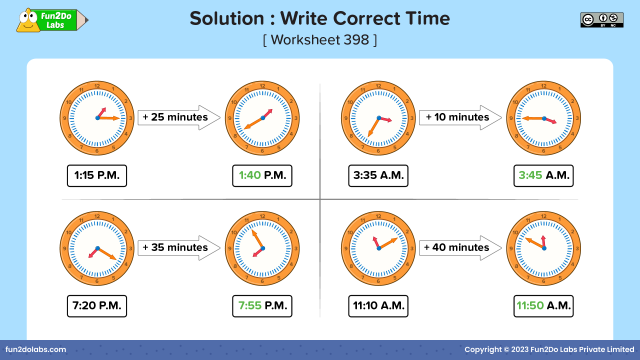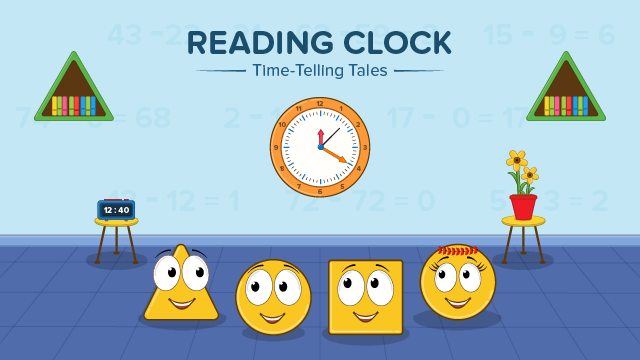
Reading a clock can be a challenging task for early learners. To make it easier for kids to understand, this teaching guide provides step-by-step instructions, fostering a patient and gradual approach. Educators can use this guide to teach the topic in an engaging manner, ensuring children grasp the concepts related to time.
Time is represented through analog clocks and digital clocks, and it’s crucial to comprehend them accurately. Initially, children may find it difficult to understand time. There are two formats of time: the 12-hour format and the 24-hour format.
Time is divided into units such as hours, minutes, and seconds, expressed in AM (Ante Meridian) or PM (Post Meridian). Let’s explore the following content to gain more knowledge about reading time by looking at the hands of a clock and representing time in different formats.
Analogue Clock :
An analogue clock is a clock or watch that displays moving hands and hours with markings from 1 to 12 to indicate time. Let’s learn how to read time on a clock. Reading time on a clock is a skill that can be easily mastered with a little time and effort. The face of the clock is called the dial, which is marked with numbers from 1 to 12. A day has 24 hours, and a clock with markings from 1 to 12 represents all 24 hours of the day.
Hour Hand :
The hour hand on the clock is like a small hand. It shows us the hours. After one hour, it moves to the next number on the clock. It takes 12 hours for the hour hand to go all the way around the clock.
Second Hand :
There is another very thin hand on the clock that moves very quickly. This hand shows the seconds. Every minute has 60 seconds. The second hand goes all the way around the clock in 1 minute. It takes 5 seconds for the second hand to move from one number to the next.
Example :
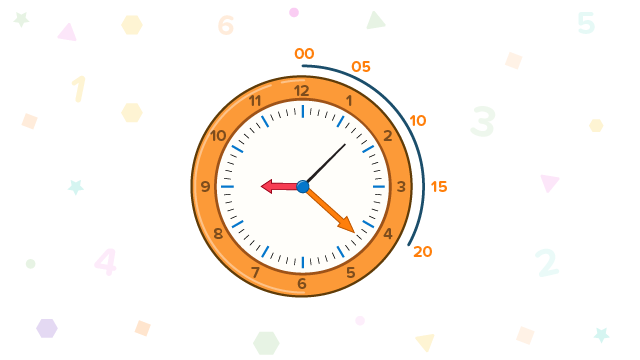
- The hour hand is pointing between 9 and 10. It is past 9 o’clock but not yet 10 o’clock. So, the hour is 9.
- The minute hand is pointing between 4 and 5. Start at the top and count by 5s until you reach the 4. Then, count by 1s for the last two tick marks. This shows 22 minutes after the hour. Therefore, the time is 9:22.
Time measurement in words:
We use different terms to represent specific time intervals:
- “Quarter to” means there are 15 minutes remaining until the next hour. For example, 05:45 means there are 15 minutes to reach 6:00. So, it is read as “quarter to six”.
- “Quarter past” means 15 minutes have passed after the hour has started. For example, 07:15 means 15 minutes have passed after 7:00. It is read as “quarter past seven”.
- “Half-past” means 30 minutes have passed after the hour has started. For example, 08:30 means 30 minutes have passed after 8:00. It is read as “half-past eight”.
Digital Clock :
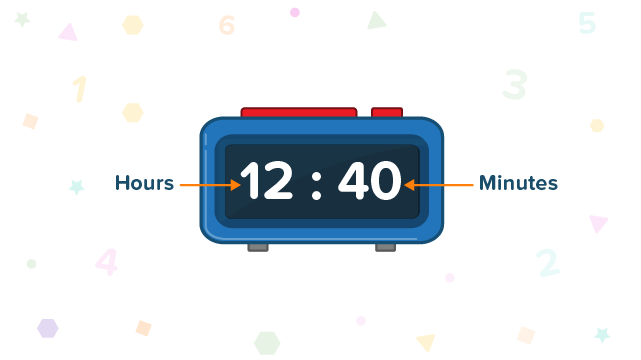
A digital clock shows the hour, followed by a colon, and then the minutes. The first two numbers represent the hour, while the last two numbers represent the minutes.
A.M. and P.M. :
Since there are 24 hours in a day but only 12 hours on a clock, we split the day into two parts. The first part of the day is called “A.M.” (Ante meridiem), and the second part is called “P.M.” (Post meridiem).
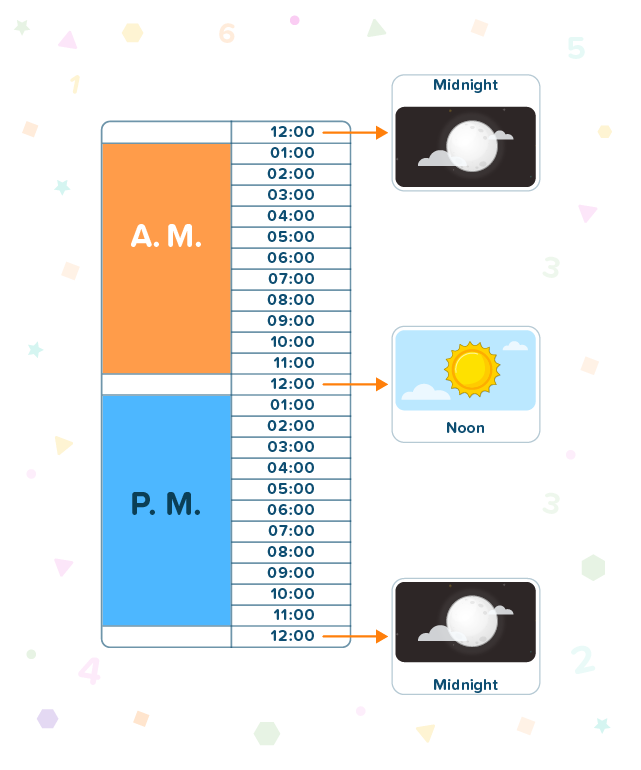
Time from 12:00 midnight to 11:59 in the morning is referred to as “a.m.”
Time from 12:00 noon to 11:59 late at night is referred to as “p.m.”
For example, 6 a.m. is early in the morning, and 6 p.m. is late in the afternoon.
Regular practice and reinforcement will help children develop a strong foundation in understanding time and reading clocks. This will lay the groundwork for more advanced concepts in the future.
Teaching about reading a clock with kid-friendly, clear, and easy-to-understand posters from Uncle Math School by Fun2Do Labs :
Ignite kids’ curiosity with engaging stories for role play and skits, making the learning of this concept an exciting and effective experience. Teaching about reading a clock through stories from Uncle Math School by Fun2Do Labs :
Teaching about reading a clock can be made enjoyable by incorporating interactive games and activities.
Time Puzzle :
This is one of the most captivating activities to teach children to read. Use these telling-time puzzle games to demonstrate different ways of showing the same time.
Scatter puzzle pieces in the centre, and kids need to collect and join the correct pieces together, one of which shows and reads the correct time!
Help your kids reading clock with interesting and engaging fun worksheets and solutions from Uncle Math by Fun2Do Labs.


